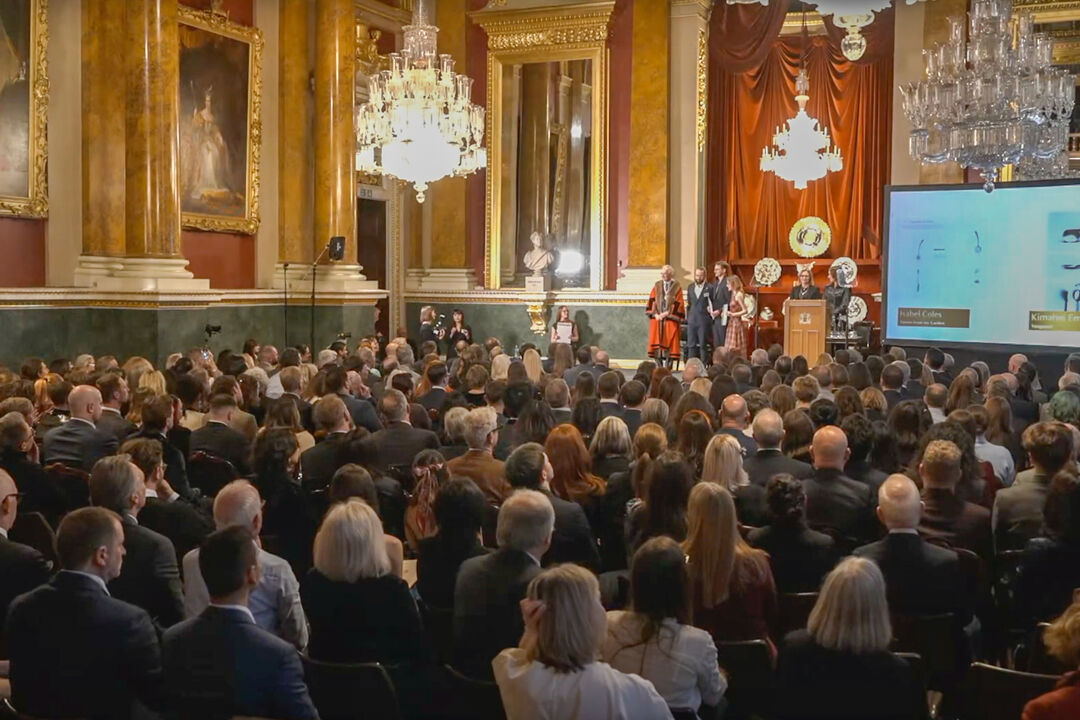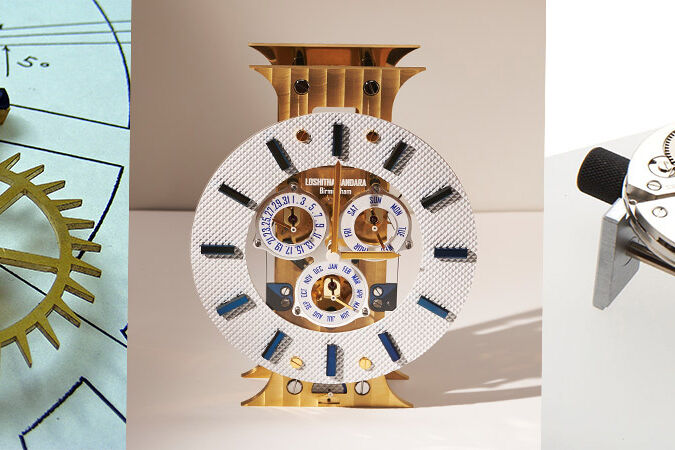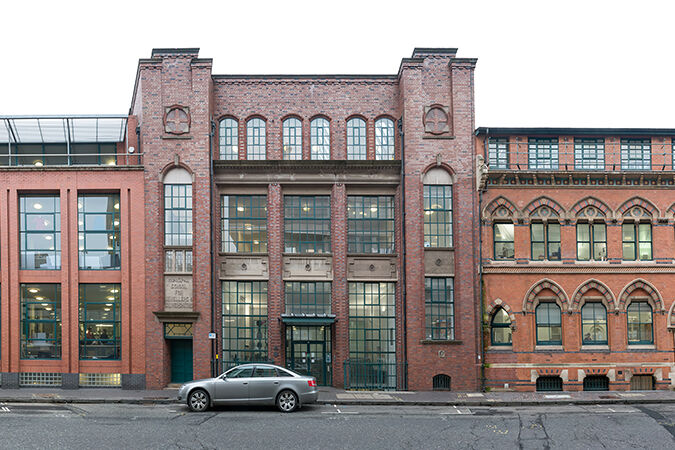
Blog

Amber Tenzin-Dolma is a final year student on our BA (Hons) Jewellery and Silversmithing – Design for Industry course. During her time at Birmingham City University, her work has earned her five awards including Gold in The Gem-A Award and Silver in 2D Design both from Goldsmiths Craft & Design Council, 1st place in Toye Kenning & Spencer’s 2D Cufflink Design category, 3rd place in Weston Beamor’s CAD Bridal Set Design competition and an award for her Professional Context Module Coursework from Ashes Memorial Jewellery.
Amber talks about her experience of entering student design competitions and shares the tips she’s picked up along the way.
One of the perks of being a student or a new designer at Birmingham City University is having access to an abundance of competitions. I’ve been fortunate enough to win five awards during my first two years studying Jewellery & Silversmithing and wanted to share some tips I’ve learnt along the way.
Why you should enter competitions
- Portfolio work
The work you produce could demonstrate skills that impress potential employers or help you gain commissions from customers. - Challenge yourself
Use it as a chance to try a new technology, hone your skills or develop your design aesthetic. - Opportunities
Winning could gain you prizes or work experience placements. Even if you don’t win this time, attending awards ceremonies will present valuable networking opportunities.
Choose a brief you’re enthusiastic to work on. If you’re assigned a brief, find a way to make it fun by exploring a theme you like or practicing your favourite techniques. Being constrained to a brief can actually help the creative process; it gives you a starting point and from there you can focus your creativity. However, it’s not as simple as just having an awesome design, there are many other ways to give your work the best chance of winning.
Read the brief. Then read it again (and maybe again).
The most important aspect of designing for a competition entry is to read and understand the brief. Some may be… brief. Some may be lengthy and strict in their requirements. Either way, take notes of the following points:
- Method
Is the brief asking for a physical object, a drawing or a 3D render? Do you need to demonstrate a particular skill or technology? - Dimensions
Are there specific sizes or measurements you’re constrained to? - Materials
Are any metals or gemstones specified? Is there a metal weight limit, a carat limit or a budget? - Design
Is there a theme? Consider who wrote the brief and design accordingly. Are they looking for a wearable commercial design or something more avant-garde? - Read between the lines
Sometimes a brief won’t state particular requirements but it might leave clues. The judges are looking for great designs but they’re also looking to see how well the designer interpreted the brief.
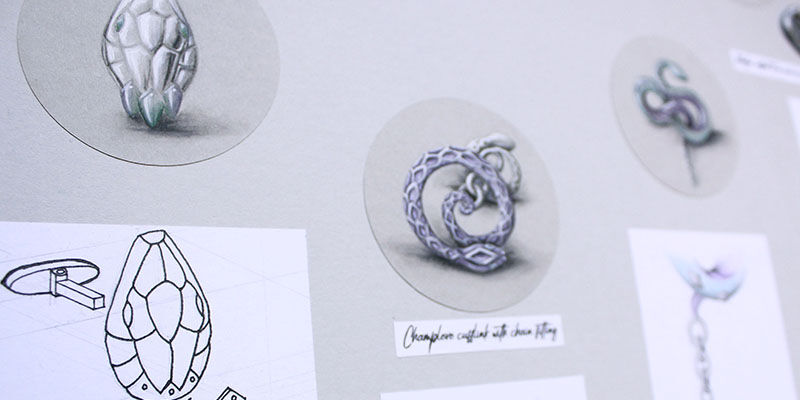
The brief for this board asked for five cufflink designs to reflect upcoming trends. After some research, I chose a snake theme in a purple and green colour palette.
Presentation is key
You probably want to be a jeweller, not a graphic designer, but how you present your work can really change how it’s perceived.
- What does the brief ask for?
Does the brief ask for a presentation board? Is it digital or physical? Can you submit more than one board? Does it need to be a particular size? Boards are often required in A3 size. - What information needs to be included?
First determine what information the judges might need, such as whether the submission is a physical piece or a 2D/3D render, what technology was used, the dimensions, any exploded views (these may be important if the piece is intended for production), materials, weight, carat and cost. - Tell a story
Guide the judges through your design development by showing some inspiration from your mood board, but be mindful of using copyrighted images. Include some sketchbook work, reveal how your design was made with photos or screenshots and then create a focal point of your final piece. - Show a finished product
Alternatively you might just want to display the finished product with some photos of the piece being worn to demonstrate wearability and the scale of the piece. - Layout
How you lay out your work can be as important as the content. Consider the following: Does the board highlight the right parts of the design? Would a simple layout work better than a decorative layout? Could you choose a colour theme that mirrors the jewellery (e.g. the colours of the gemstones used)? Does the typography complement the style of the piece. For ideas, ask your lecturers if they can show you examples of previous students work, look at the work of previous competition winners or browse Pinterest and Google. - Proofread
Don’t forget to proofread any written sections to check for spelling and grammatical errors!
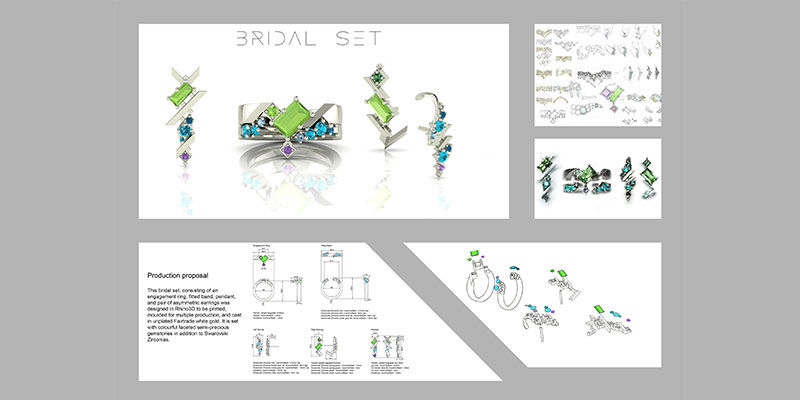
My presentation board for a Weston Beamor CAD competition. I included my design development, a production proposal with dimensions and stone information, exploded views and a CAD render. I also included a photograph of the pieces after printing, casting and setting.
Don't design to win
Finally, stick to the brief but do the rest for yourself. That way, even if you don’t win, hopefully you will still have produced a piece of work that you’re proud of, practiced a skill or refined your personal design style, and gained an example of work for your portfolio.
And, if you do win, congratulations! Along with prizes and opportunities, winning a competition can be a great addition to your CV but, most importantly, it can help you build confidence in your creative endeavours.
Good luck!
